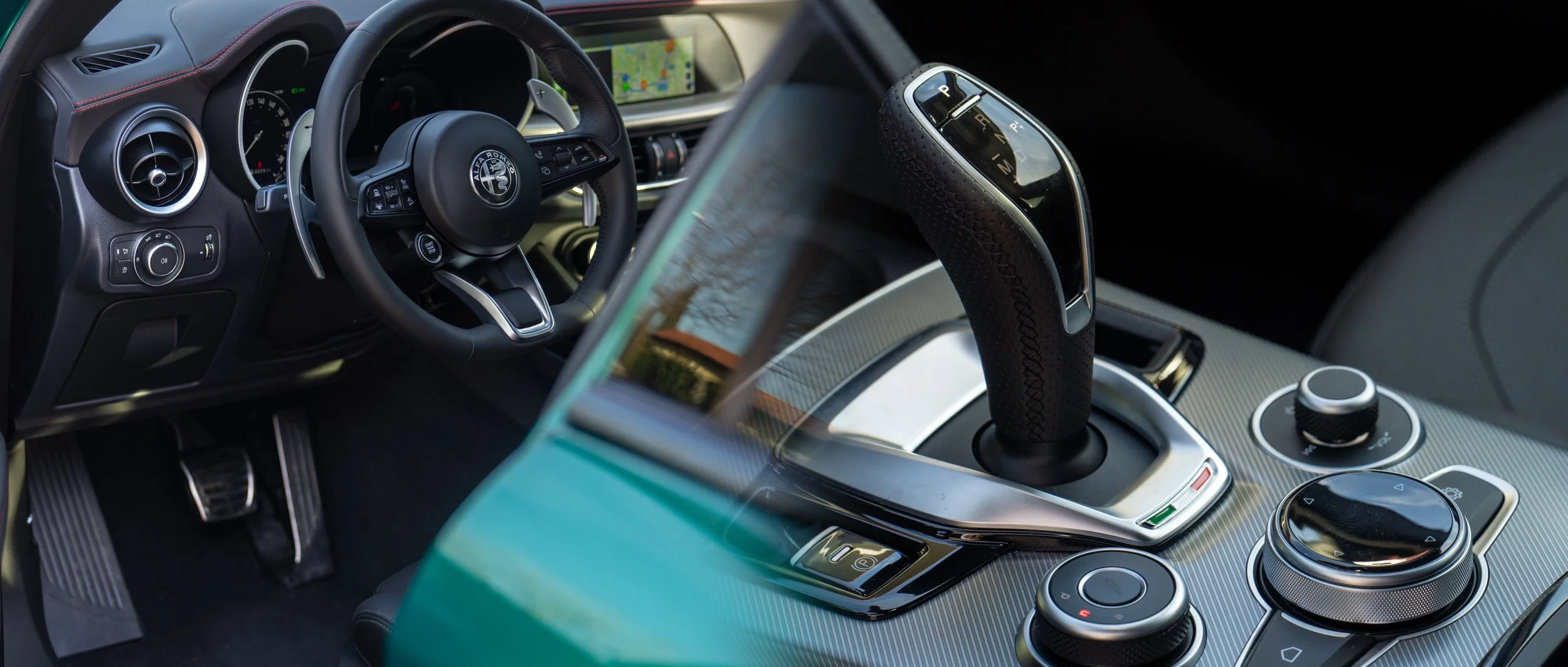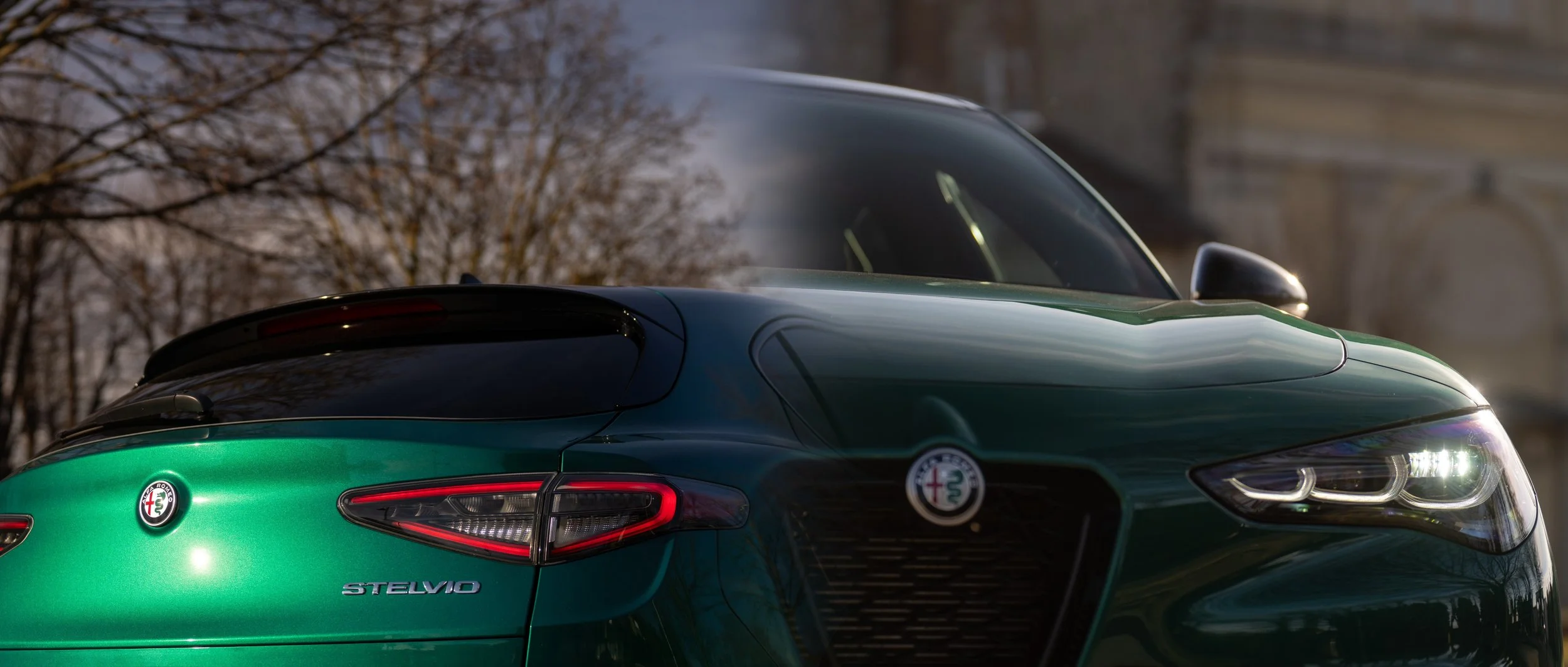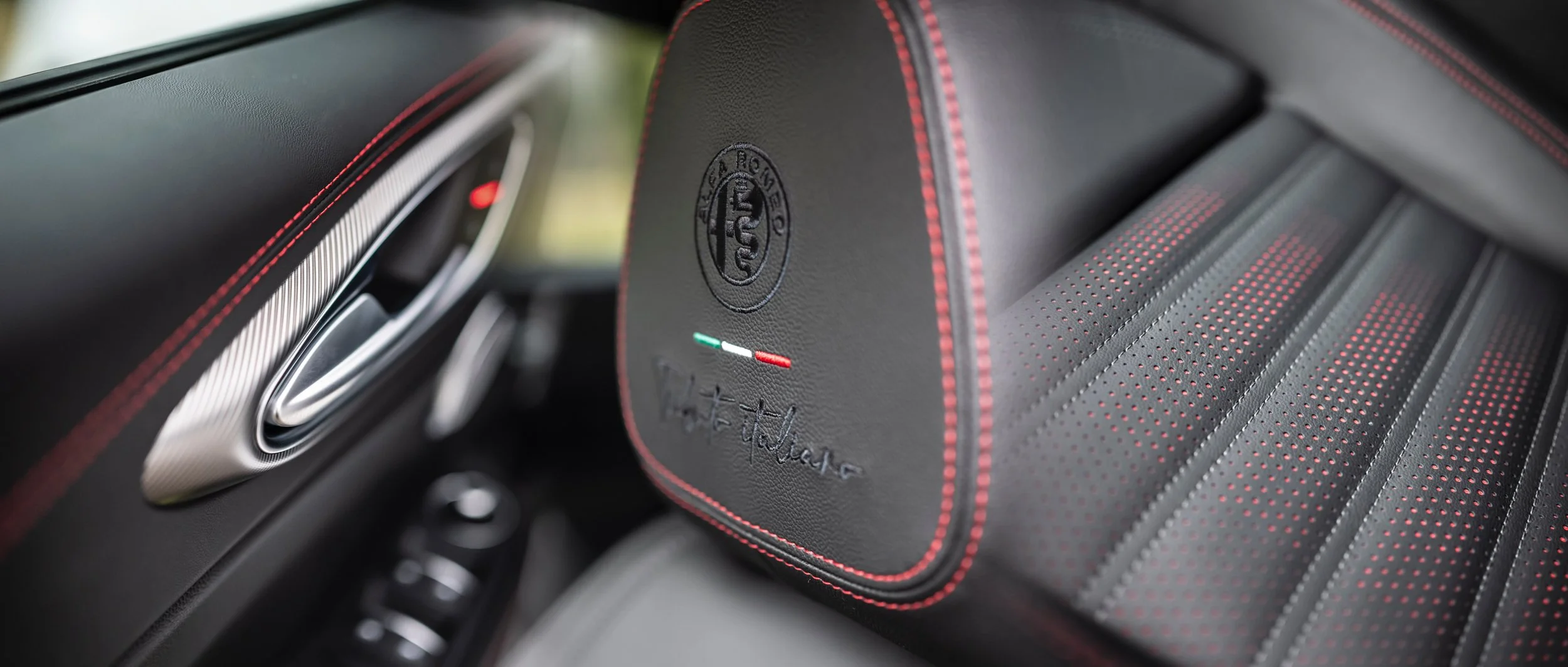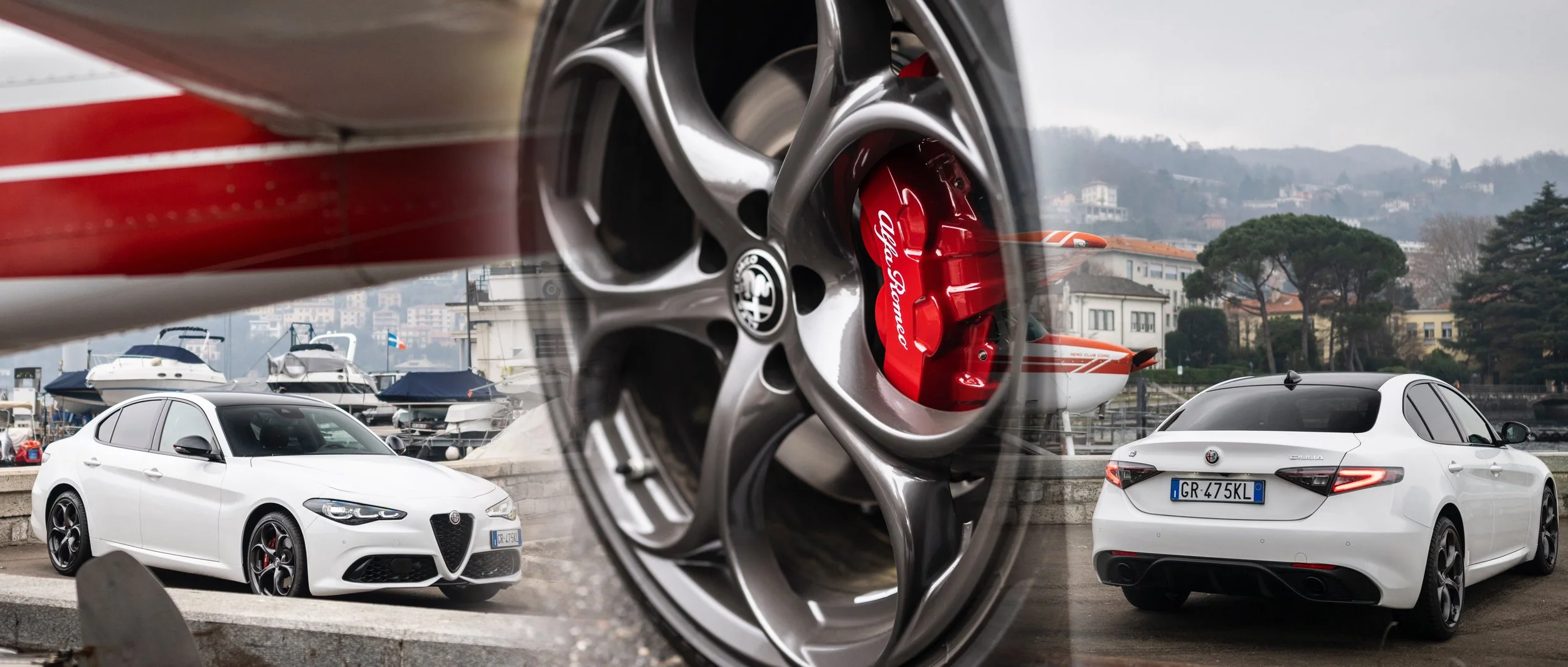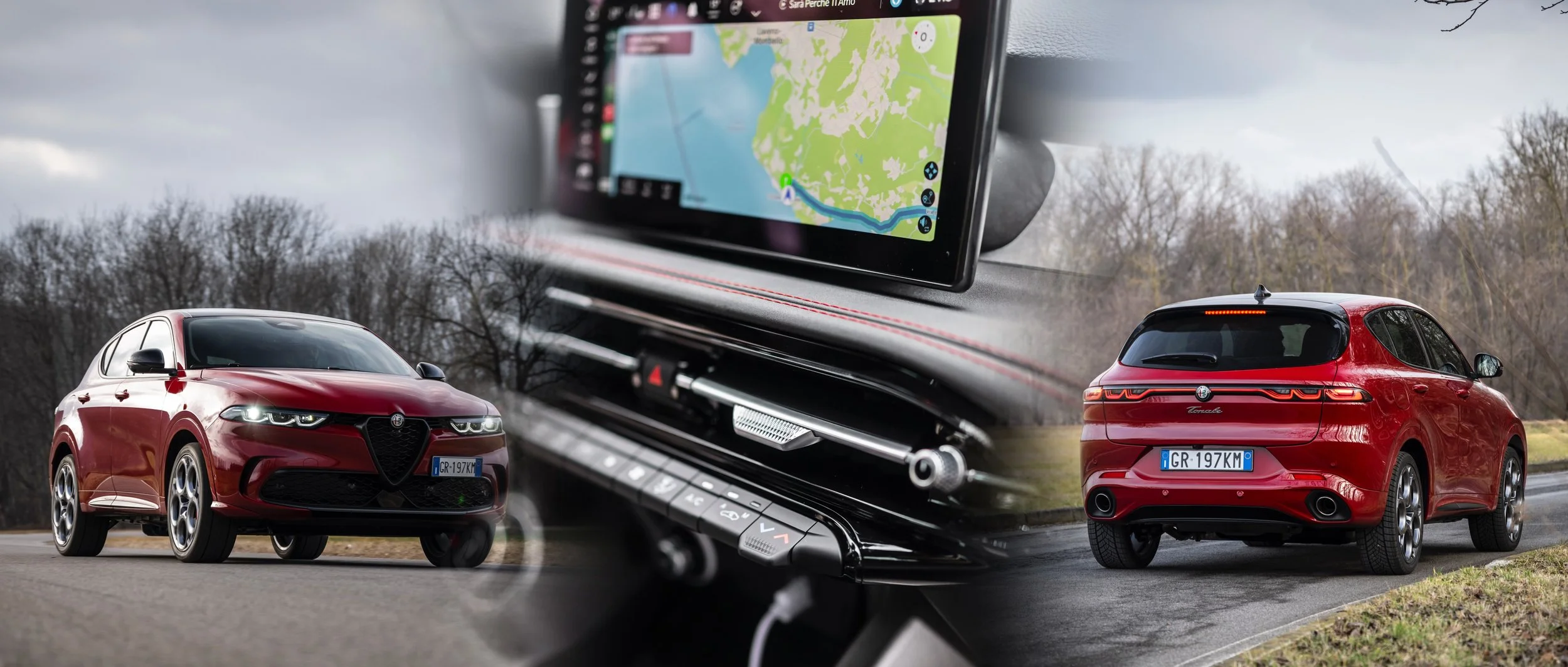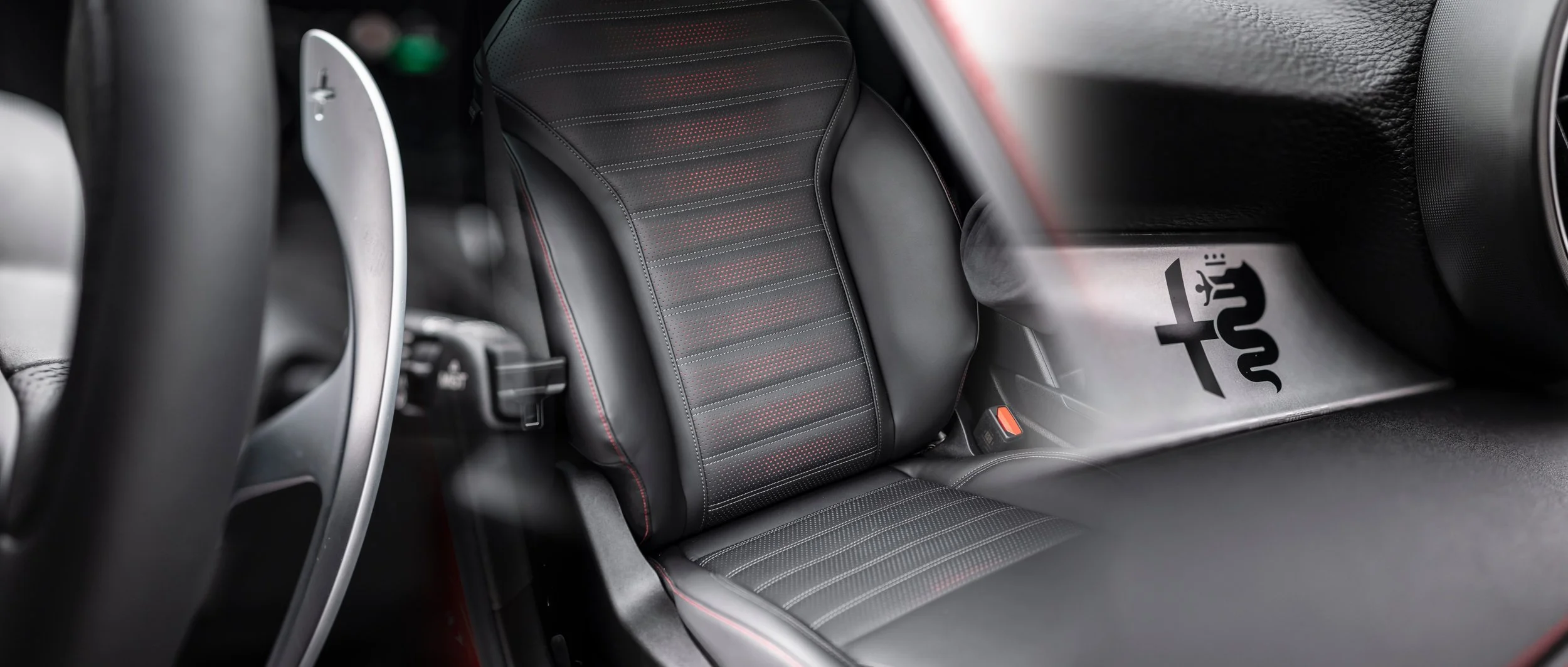TRIBUTO ITALIANO
Alfas are unique cars in the current automotive panorama. In the uniformed world of today when there’s not really such a thing as a bad car Alfa Romeo still stands out. Alfas are proverbially engaging to drive, despite the popular cliches - very well built (as demonstrated by the numerous customer satisfaction surveys in the last couple of years), they’re offering an exquisite environment on board and most notably a visually appealing exterior. Centro Stile’s designers, more often than not, get it right the first time trying. This might be counter productive for their bread earning day to day jobs: it means that an Alfa’s style rarely need’s improving throughout what is a regular car’s life cycle. It took Giulia 8 years (7 for the Stelvio) to receive redesigned headlights… because frankly there wasn't much that was wrong with the ones the cars came with. No need for any forced facelifts and origami style creasings to redo the bodywork.
Tributo Italiano - the new trim available throughout the range doesn’t come with any useless contortionisms either. It is unashamedly an ode to what makes the Alfas so special in the first place - the Italianness, and it’s available in the colours of the Italian flag: green, white and red. Sitting above the Veloce in the catalogue, they’re loaded with all the goodies deservedly at the top of their lines, with only the Quadrifoglios going higher. I drove all three cars on the roads going around Lake Como and Lake Maggiore in Northern Italy over two days, looking as ever to discover the beauty of the Italian spirit beyond the depth of the skin, no matter how beautiful it is.
First off, Stelvio. After debuting on the Quadrifoglio last year, the gorgeous three layer Green Montreal can be paired on the Tributo Italiano with the 2.2 diesel engine or the 2.0 petrol. It looks rich and elegant, and with the 21 inch black wheels and black roof it’s making out to be one really serious car. For me, it’s also the perfect car in Alfa’s current range, and by far the one I could see myself driving straight away. With two kids on board, going skiing in winter and taking road trips to the Mediterranean sea in the summer, the Stelvio, especially with the 280 hp petrol engine I’m driving, is a car to pack a punch, besides the family. The Veloce type seats are just perfect, the direction input is almost telepathic, the premium 14 speaker Harman Kardon is soothing me with the deepest intonations of the Italian classics. The red stitching is a reminder that this is a sporty SUV, and the big aluminium paddles are easy to reach behind the steering wheel if I’d feel the need to play with the power at disposal and bring up the higher revs, but I’m cocooned and relaxed as one could be driving into the sunset towards the hotel overlooking Lake Como. It’s reassuring to know one has the power, even if it doesn't need using all of the time.
The following day starts fresh with a white Giulia. The Italian flag on the mirror caps stands out nicely, matching another flag and the “Tributo Italiano” script on the front headrests. I’ve always found it interesting how different the character of the cars appears to be, even if they’re built on the same platform, as soon as one takes to the wheel. If in the Stelvio you’re somehow sitting up, commanding the road, in the Giulia you’re sitting down more akin to a sports car. The gorgeous seats have a red layer underneath the perforated black leather, a style of upholstery first seen on the Tonale Veloce, and in my mind the white body matched by this black interior with red accents it’s a classier alternative to a Miami-esque white on full red. It’s a milky atmosphere on the shores of Lake Como with the morning fog barely lifting up and after a couple of shots next to the fascinating seaplanes parked in front of the Aero Club Como it’s time we take to the twisties. I’m driving the 210 diesel this time, and the words of an Alfa engineer in Balocco from a few years ago are still fresh in my ears - we was convinced that in normal traffic conditions and for a regular driver not pushing to the limit, the difference between the diesel and the petrol versions are minimal. Be it for the lower sitting position, be it that I’m going up a hill, but I’m finding myself eager to push more and more, and I have to keep reminding myself it's a diesel, although it barely feels like one. You can’t become a hooligan in a Giulia, but as diesel engines go I’ve yet to find its limit, this car is much better than I am as a driver. The ride up to Lake Maggiore takes up the good part of the morning up into the afternoon, after which it’s time to give the Tributo Italiano Tonale Plug-in-hybrid a go.
Along with the other pieces and bits signalling this special edition that are common with the Giulia and Stelvio (one of three Italian flag body colours with contrasting black roof, specific interior badgest and stitchings) the Tonale Tributo Italiano (available with the 1.3 PHEV 280 hp I’m testing and also the 1.5 160 HP MHEV) brings out perhaps more significant novelties: the black roof is masking a panoramic soon-roof that previously wasn’t available, while for the first time the entire body kit is matching the main body colour (previously part of the rear bumper, wheel arches and side skirts were black). At the interior a new trim element for the Tonale is the carbon look dash fascia. In my opinion the Tonale is by far the best looking car in its segment: it’s sexy and aggressive at the same time with its 3 plus 3 style headlights, and from certain eagles, mostly rear quarter, the general allure reminds me of the bigger Stelvio. It definitely has charisma seen in day to day traffic, and it was a pleasant surprise to see quite a number of Tonales on the roads linking Milano to Como and Lago Maggiore. So how does it drive, ask the alfisti? A hard to please bunch as my fellow Alfa owners (maybe because the Giulia & Stelvio have raised the bad so high) should rest assured the Tonale feels like an Alfa should. With its 280 HP (180 HP from the petrol engine to the front axle and 100 from the electric one to the rear) the Tonale Q4 is no slow coach. The batteries and extra transmission parts bring the weight up to approximately 1900 kg, but the Tonale can still sprint to 100 km/h in a little over 6 seconds. And the way the electric engine intervenes to give its extra push is almost unnoticeable. I need to pay attention to the road, the car’s computers are doing the rest. Of course, the dash mounted 10 inch touch screen can give out all the informations in real time, as to where the power is produced, delivered or even recovered - an ace up the Tonale’s sleeve is that under certain conditions it can regenerate power and effectively recharge the batteries, so that up to 80 km could be driven on electric power alone.
It is Alfa’s jack of all trades at the moment, fun to drive and easy on the eye, things that we all know can’t be taken for granted in this category. With the stylish touches of the Tributo Italiano trim, there truly isn't a more emotionally engaging or frankly better alternative for a compact SUV.
Green Stelvio shot by Sebastian Iordache, white Giulia and red Tonale shot by Luca Danilo Orsi.



